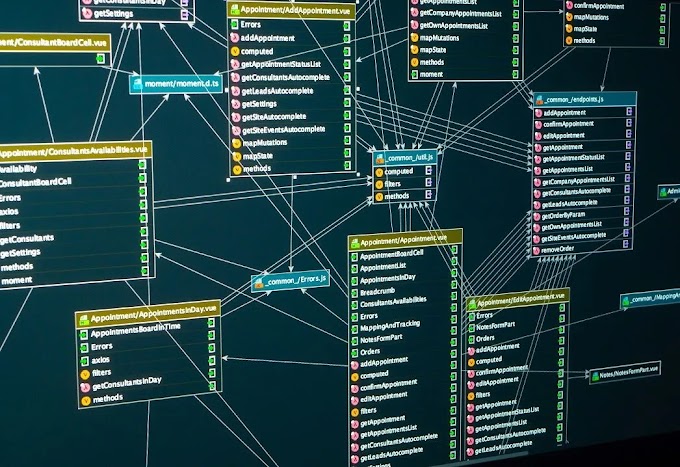Understanding SEO and How it Works Before we dive into how to integrate SEO into your programming, let’s first understand what SEO is and how it works. SEO is the practice of optimizing your website content to improve its ranking on SERPs. The primary goal of SEO is to increase website traffic by improving the website’s visibility on search engines.
To understand how SEO works, we need to understand how search engines work. When a user types in a query on a search engine, the search engine crawls through its index to find relevant pages that match the user’s search query. The search engine then ranks these pages based on various factors, such as the relevance of the content, the quality of the content, and the authority of the website.
SEO involves optimizing your website content to rank higher on SERPs by improving these factors. There are two types of SEO: on-page SEO and off-page SEO.
On-page SEO involves optimizing the content on your website, such as the title tags, meta descriptions, headers, and content. Off-page SEO involves optimizing factors outside of your website, such as backlinks and social media shares.
Now that we understand what SEO is and how it works let’s dive into how to integrate SEO into your programming for better blog traffic.
Integrating SEO into Your Programming
1. Keyword Research
Keyword research is the foundation of SEO. It involves researching the keywords and phrases that your target audience is using to find information related to your blog content. Keyword research helps you understand your audience and the language they use, allowing you to create content that matches their search queries.
To integrate keyword research into your programming, you can use various tools, such as Google Keyword Planner, Ahrefs, or SEMrush. These tools help you identify relevant keywords, estimate search volume, and analyze the competition.
Once you have identified the keywords relevant to your blog content, you can integrate them into your programming. For example, you can include the target keyword in your blog post title, meta description, headers, and content.
2. URL Structure
URL structure is an essential factor in on-page SEO. A clear and concise URL structure helps search engines understand the content of your web pages, making it easier for them to crawl and index your site.
To integrate URL structure into your programming, you should ensure that your URLs are clear and concise, containing the target keyword. For example, instead of using a URL like "www.example.com/1234," use a URL like "www.example.com/keyword-phrase."
3. Site Speed
Site speed is an essential factor in SEO. Search engines prioritize sites that load quickly, as this provides a better user experience. Users are more likely to abandon a website that takes too long to load, resulting in a higher bounce rate and lower search engine rankings.
To integrate site speed into your programming, you can use various tools, such as Google PageSpeed Insights, to analyze your site's speed and identify areas for improvement. You can also optimize your code, compress images, and reduce server response time to improve site speed.
4. Mobile Responsiveness
Mobile responsiveness is another critical factor in SEO. With more and more users accessing the internet through mobile devices, search engines prioritize sites that are mobile-friendly. A mobile-responsive site provides a better user experience, reducing bounce rates and improving search engine rankings.
To integrate mobile responsiveness into your programming, you should ensure that your website is optimized for mobile devices. This involves using responsive design, which allows your website to adapt to different screen sizes and devices.
5. Content Optimization
Content optimization is the process of optimizing your website content for search engines and users. This involves creating high-quality, informative, and engaging content that matches the search intent of your target audience.
To integrate content optimization into your programming, you can use various tools, such as Yoast SEO, to analyze your content and identify areas for improvement. You can also use keyword research to optimize your content for specific keywords and phrases, ensuring that it matches the search intent of your target audience.
6. Structured Data
Structured data is a way of organizing your website content to help search engines understand the context of your content. Structured data provides additional information about your website content, such as the author, date published, and other relevant information.
To integrate structured data into your programming, you can use various tools, such as Schema.org, to add structured data markup to your website. This markup helps search engines understand the context of your content, making it easier for them to crawl and index your site.
7. Site Security
Site security is an essential factor in SEO. Search engines prioritize secure sites, as this provides a better user experience. Users are more likely to trust and engage with a secure website, resulting in a lower bounce rate and higher search engine rankings.
To integrate site security into your programming, you should ensure that your website is secure by using HTTPS encryption. HTTPS encryption provides a secure connection between your website and users, protecting their data and ensuring that your site is trustworthy.
Conclusion
Integrating SEO into your programming is essential for improving blog traffic and ranking higher on search engine results pages. By following the tips outlined in this article, you can optimize your website content, improve site speed, and create a better user experience, resulting in higher search engine rankings and more traffic to your blog. Remember, SEO is an ongoing process, and it requires consistent effort and optimization to achieve the desired results. With time and effort, you can achieve higher search engine rankings and drive more traffic to your blog.







